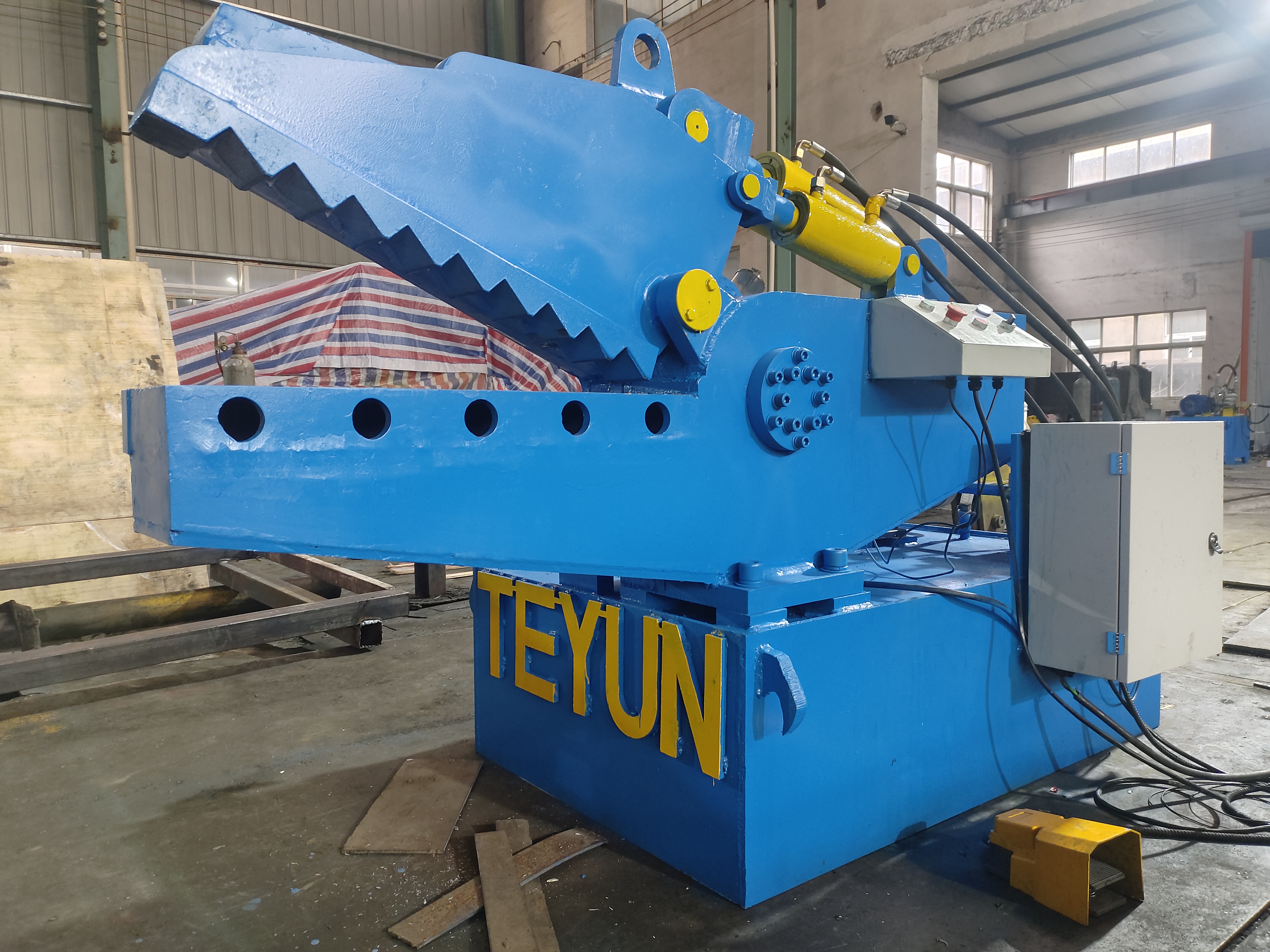Hydraulic alligator shears are essential in various industrial fields such as scrap metal processing and manufacturing.
Regular maintenance is essential to ensure the life and effectiveness of key components. This article provides a detailed guide on maintaining and servicing the main components of hydraulic alligator shears.
1. Maintaining the cutting blade
Regular inspection and sharpening: Regularly check the blade for dullness or damage. Sharpen the blade as needed to ensure smooth cutting and relieve stress on the machine.
Replacement: If the blade is excessively worn or damaged, replace it in time to avoid affecting the efficiency and safety of the machine.
2. Press cylinder
The press cylinder is responsible for the driving force of the shear to cut the material.
Seal inspection: Frequently check the hydraulic seal for wear or leakage. If necessary, replace the seal to prevent fluid leakage and maintain pressure.
Rod condition: Check for wear, corrosion or misalignment on the cylinder rod. A damaged rod can lead to inefficient operation and safety hazards.
3. Press plate
The press plate holds the material in place during the cutting process.
Alignment check: Make sure the press plate is aligned with the cutting blade for optimal performance.
Surface inspection: Check regularly for any cracks or wear, and repair or replace the platen if it is damaged.
4. Motor
The motor powers the hydraulic pump and needs to be checked regularly to ensure it is operating efficiently.
Cooling system: To prevent overheating, keep dust and debris out of the motor's cooling system.
Electrical connections: Check all electrical connections for signs of wear or corrosion. Secure any loose connections and replace damaged wires or components.
5. Valves
The pressure and flow of the hydraulic oil are managed through hydraulic valves.
Operational testing: To ensure the valves are operating properly, test them regularly. Be alert for unusual sounds that may indicate potential problems.
Cleaning: Keep the valves clean and free of debris buildup that can cause the valves to stick or malfunction
6. Cutting cylinders
Like press cylinders, cutting cylinders are used for cutting, so similar care is required.
Leakage checks: Make sure the hydraulic oil level is correct and perform regular leak checks.
Pressure tests: Check the hydraulic pressure in the cutting cylinder regularly to ensure it meets the specifications required for efficient operation.
7. Pumps
The machine's hydraulic oil must move, so a hydraulic pump is needed.
Oil Level and Quality: Check the hydraulic oil level regularly and top up as needed. Replace the oil if it is contaminated.
Pump Inspection: Listen for noise changes and check for vibrations, which may indicate wear or misalignment.
8. Electric Box
The electric box contains the electrical components that control the machine.
Moisture and Dirt: Make sure the electric box is free of moisture and dirt, which can cause electrical failures.
Component Inspection: Frequently check all components inside the electric box for signs of wear or damage. Replace any damaged components immediately.
9. Oil Tank
The oil tank stores the hydraulic oil required for the machine to operate.
Cleanliness: Keep the oil tank clean and ensure that the oil is not contaminated by debris or water, which can damage the hydraulic system.
Gaskets and Seals: Check the seals and gaskets that attach to the oil tank for signs of degradation or perforation and replace them accordingly.
10. General Maintenance Tips
Routine Cleaning: Clean the entire machine regularly to prevent the accumulation of debris and dirt, which can affect the operation of the machine and cause premature wear.
Lubrication: Apply lubricant to moving parts as directed by the manufacturer to ensure seamless function.
Regular maintenance is essential to the life, efficiency and safety of hydraulic alligator shears. Regular inspection and maintenance of components such as cutting blades, cylinders, motors and valves prevents breakdowns and optimizes performance.

